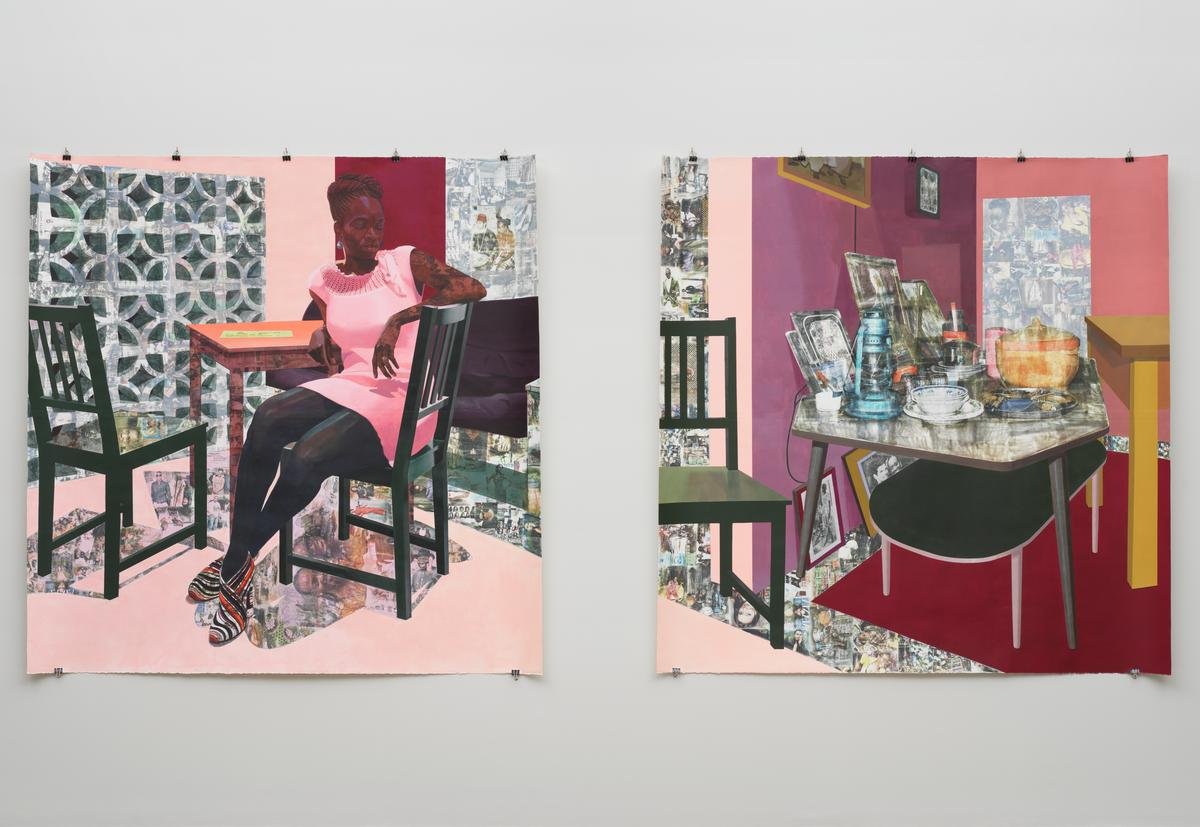'Capturing the Moment' at the Tate Modern
By Lucy Evans
Capturing the Moment at the Tate Modern offers a loose narrative centred on the relationship between painting and photography - or photography’s invention and subsequent introduction into art practices alongside painting. This exhibition therefore creates connections between the two mediums but also leaves space for each to exist independently of the other. The curators of the exhibition have clearly left much of the interpretation open to the viewer, but have signposted the ways in which painting and photography have developed in tandem since the latter’s inception, and in particular how photography has altered painting practices, most notably in freeing it of its mimetic duties.
Many of the photographs in the exhibition are striking in their scale, which perhaps upturns our usual expectations for photographs as objects which are personal, vernacular, talismanic and usually held in our hands or passed between loved ones. Indeed, a quote from the writer Tina Campt later on in the exhibition elucidates the function of photographs in these words:
“Photographs are haptic objects, meaning that they’re not just taken as something we’re supposed to see, but that photographs are made or have historically been made to be touched, to be handed from one person to the next.”
This quote highlights both how photographs differ from paintings in their social function, and how this role has changed over time, with digital photography and monumental art photography, such as that included in this exhibition, meaning that photographs are now functioning more like paintings in exhibition spaces – as less ‘haptic’ objects. Thomas Struth’s photographs in this exhibition are so large that walking up close to them felt immersive, as if you could enter the scene. Struth’s image entitled Monreale Cathedral in Palermo (1998) [Fig. 1] is strikingly beautiful: glittering in gold and sensual, yet full of granular detail, it isn’t immediately obvious whether it is a photograph or a painting. Some of the figures, like in many of Struth’s works, are ephemeral and blurred, captured in motion. Struth’s image is not only visually striking, with its epic perspective focused on the altar of this ornate cathedral interior, but it cleverly comments on the rituals of Western tourism practices and the act of looking itself. Most of the figures look out at the cathedral with their backs to us, echoing the viewer’s position in the gallery, which becomes a vicarious experience of being in the cathedral with those in the image.
[Figure 1] Thomas Struth, Monreale Cathedral in Palermo, 1998, color coupler print, 186.5 x 231.5 cm.
Another large-scale photograph is that entitled El Ejido by Andreas Gursky (2017) [Fig. 2]. Grouped alongside other works which together comment on ecological devastation, this image exposes the plastic pollution scarring the landscape around the town of El Ejido in Almería, Spain. More than 30,000 hectares of land in this area are covered with plastic in order to intensively cultivate crops. This monumental work offers a critique on ruthless capitalist industries which wreak havoc on the environment, such as unsustainable and industrial-scale farming practices. This room also displayed works by Hiroshi Sugimoto, such as Tyrrhenian Sea, Conca (1994) [Fig. 3]. This photograph was striking in its evocation of the sublime and the feeling of vastness that it communicates. The image is reminiscent of an Abstract Expressionist work, with its simplicity of form, but the ripples of the charcoal sea disrupt the immobility of the work, animating its surface and introducing the elements of wind and water into the picture, as one can image the wind on the water, creating this endless pattern of ripples on its surface.
[Figure 2] Andreas Gursky, El Ejido, 2017, photograph, inkjet print on paper, 232.6 x 407.6 cm, YAGEO Foundation Collection, Taiwan.
[Figure 3] Hiroshi Sugimoto, Tyrrhenian Sea, Conca, 1994, black and white photograph on paper, 153 x 182.5 cm, YAGEO Foundation Collection, Taiwan.
The largest room of the exhibition displayed a varied collection of mostly very large paintings. This room felt exciting and unique because of the sheer number of artists’ works collected together in one room. The paintings reflected a broad range of themes – from celebrity culture and Andy Warhol to conflict in postcolonial Kenya in Michael Armitage’s work to the contemporary European refugee crisis in the work of Miriam Cahn. Cahn’s Das Schöne Blau (The Beautiful Blue, 2008-2017) [Fig. 4] was, for me, the most memorable work from the whole exhibition in its poignancy, fragility and eeriness. Two figures are pictured gracefully – and paradoxically peacefully – sinking into the water, their blue bodies blending into the blue of the ocean, with undertones of pink suggesting the fast-fading life in their vulnerable bodies.
[Fig. 4] Miriam Cahn, Das Schöne Blau, 2008-2017, oil on canvas, 250 x 180 cm, Tate, London.
Njideka Akunyili Crosby’s 2013 work, Predecessors [Fig. 5], is composed of two multi-media works made from paper, charcoal, acrylic paint, graphite and transfer print, appearing overall like a collage. Using family photographs (this work is paired with Tina Campt’s aforementioned words), Crosby’s work evokes the vernacular and the intimate in the way in which the work is situated in a domestic setting with layers of hidden meanings in the graphic imagery used, with political commentary combined in the use of cut-outs from Nigerian popular magazines and newspapers. The female figure is an alter ego for the artist: a modern African woman who embodies a cosmopolitan African lifestyle, with the artist referring to her as an ‘Afropolitan’, which refers to the African diaspora and contemporary identities which exist between multiple geographies and cultures.
Figure 5: Njideka Akunyili Crosby, Predecessors, 2013, paper, charcoal, acrylic paint, graphite and transfer print, both 212 x 212.3 cm, Tate, London.





